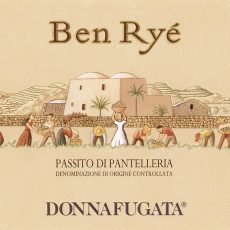Description
The history of the Fabiano Winery was founded in 1912 when the founder Francesco Fabiano, with his son Sergio, began to sell their wines in the city of Venice and from this expands its activity in the Veneto hinterland to Verona. At the end of the fifties Sergio Fabiano and his sons moved permanently to Verona, initially in the Cellar of Colà di Lazise where the trade activity took place in all of Northern Italy. In the following decade the family began the construction of a new winery in Sona which became, starting in the early seventies, one of the largest wineries in Italy in terms of volumes of wine produced. The commercial growth of the eighties and nineties saw Fabiano wines exported to all the main countries of the world in ever increasing volumes making Fabiano one of the main wineries of the Verona and national oenology.
Starting from the 2000s, while the evolving wine and food industry was modifying the consumption model of the wine itself, Fabiano began a rapid growth path in terms of quality and image, concentrating its production efforts towards fine wines, thus renouncing to the volumes to give space to its Amarone, already produced starting from 1966 in its historical packaging kept unchanged until today, and to its other best wines such as the Ripasso and the Lugana.
Alessandro Fabiano, the fourth generation, is today the producer of Fabiano wines, strong of a name known all over the world thanks to its 111 years of history and its PREMIUM wines, produced in a limited quantity to 300.000 bottles. Bottling of some wines has remained in the Sona Cellar, while headquarters and logistics are now in the new building in Valpolicella. Production takes place as in the past in the quality vineyards of historical growers that produce for Fabiano since the beginning of the Amarone success..
“Fondatori” Amarone della Valpolicella DOCG Riserva
Amarone is a wine of antique lineage. It has a limited production with grapes coming from the classic zone of Valpolicella. The grapes are hand picked, pressed and vinified according to the age-old traditional method. Its flavor is dry and pleasant with a characteristic perfume and its colour is deep pomegranate which is the result of prolonged ageing.
REGION: Produced by a careful selection of the above mentioned grapes from the high hills vineyard located in the classic area of the Valpolicella DOC region, in particular around the ancient village of Negrar.
SOIL COMPOSITION: Soil of calcareous-eocene type.
HARVEST: Gathering of the grapes is done by hand in order to allow a more careful and accurate selection of grapes in the vineyard: beginning of October. Following the traditional method of the Valpolicella, grapes are left to dry for about 120 days in aerated rooms.
PRESSING: Soft pressing of the dried grapes with a yields in wine of 36%.
VINIFICATION: Fermentation starts usually in the second week of February and lasts about 60 days, including 30 days of maceration. Controlled temperature during fermentation of about 14-15° C.
AGEING: Minimum 30 months in big barrels and then about 6 months in the bottle before going on the market
.





